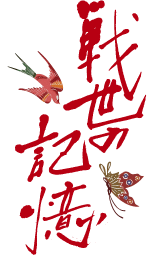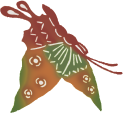
Our journey of repatriation from Manchuria
"Our journey of repatriation from Manchuria"
Name: Shoei Sunagawa (12砂川昌栄)
Date of birth: February 1, 1924
Status at the time: 18-year-old member of the Japanese Youth Volunteer Corps in Manchuria
Our company was subdivided into seven platoons. Each platoon was assigned a house. It was a small training center, and our training was only for one year. After this training, we went to a large training center at a place called Boli. I was in Boli until I completed the three-year training with the Volunteer Corps.
Once I finished the three-year training with the Volunteer Corps, the Pioneer Group was the next step. The Pioneer Groups were comprised of those who had completed the three-year training with the Volunteer Corps and ordinary pioneer groups. Ordinary pioneer groups were comprised of couples with kids who, of their own volition, formed pioneering groups to form a kind of migration group. Ours was different. Members of the Volunteer Corps ranged in age from 15 to 18, and after three years of training, they became grown-ups. Once we reached that stage, we were permitted to work in the Pioneer Groups. People in the Volunteer Corps formed the Pioneer Groups in this manner.
When the war ended, we were disarmed on the 15th and were forced back on the 16th. We all returned to the quarters of our Pioneer Group. When we returned, the Soviets had complete control. We were then silently gathered and put into a prison camp. We spent some time there, but we were then loaded onto freight cars. It was not just the people from our prison camp, but people from other prison camps were also loaded onto those freight cars. I had no idea where we were. The doors of the freight cars were locked. When the freight cars stopped, we got off to go to the toilet. We were given only five minutes. We were unable to see outside other than when we went to the toilet. When we arrived at our destination, we were in the northernmost part of Manchuria, called Heihe. It was only September, but where we were was cold because we were right next to Russia.
Unlike Harbin or Hsinking, larger houses, which used to belong to the Japanese, were allotted to the refugees in Heihe, and the houses were referred to in terms of blocks. 20 people were allotted to each house. There was a supply of food also, but not in sufficient amounts. People were dying left and right from malnutrition or from the epidemic typhus. There was nothing we could do. We were just people of a defeated nation.
People at the Temporary Domicile Headquarters provided assistance, but still, many people died. People were afflicted from the epidemic typhus and malnutrition. Our block was in the middle of Mukden, hence a temple was there. A large hole had been excavated in the garden of the temple. All the corpses were buried in that hole. It is probably more accurate to say that they were dumped in there, rather than buried. In March and April, the snow and ice started melting, and the bodies started to rot. Young people gathered there and were ordered to "Relocate all the thousands of corpses to the outside of town." Only young people like us could still move. We dug into the hole every day, wrapped a rope around the corpses and lifted them out onto the ground, before stacking about 50 bodies at a time onto a horse-drawn cart and transporting them out of Mukden City. We abandoned them in the mountains outside Mukden City.
Name: Shoei Sunagawa (12砂川昌栄)
Date of birth: February 1, 1924
Status at the time: 18-year-old member of the Japanese Youth Volunteer Corps in Manchuria
Our company was subdivided into seven platoons. Each platoon was assigned a house. It was a small training center, and our training was only for one year. After this training, we went to a large training center at a place called Boli. I was in Boli until I completed the three-year training with the Volunteer Corps.
Once I finished the three-year training with the Volunteer Corps, the Pioneer Group was the next step. The Pioneer Groups were comprised of those who had completed the three-year training with the Volunteer Corps and ordinary pioneer groups. Ordinary pioneer groups were comprised of couples with kids who, of their own volition, formed pioneering groups to form a kind of migration group. Ours was different. Members of the Volunteer Corps ranged in age from 15 to 18, and after three years of training, they became grown-ups. Once we reached that stage, we were permitted to work in the Pioneer Groups. People in the Volunteer Corps formed the Pioneer Groups in this manner.
When the war ended, we were disarmed on the 15th and were forced back on the 16th. We all returned to the quarters of our Pioneer Group. When we returned, the Soviets had complete control. We were then silently gathered and put into a prison camp. We spent some time there, but we were then loaded onto freight cars. It was not just the people from our prison camp, but people from other prison camps were also loaded onto those freight cars. I had no idea where we were. The doors of the freight cars were locked. When the freight cars stopped, we got off to go to the toilet. We were given only five minutes. We were unable to see outside other than when we went to the toilet. When we arrived at our destination, we were in the northernmost part of Manchuria, called Heihe. It was only September, but where we were was cold because we were right next to Russia.
Unlike Harbin or Hsinking, larger houses, which used to belong to the Japanese, were allotted to the refugees in Heihe, and the houses were referred to in terms of blocks. 20 people were allotted to each house. There was a supply of food also, but not in sufficient amounts. People were dying left and right from malnutrition or from the epidemic typhus. There was nothing we could do. We were just people of a defeated nation.
People at the Temporary Domicile Headquarters provided assistance, but still, many people died. People were afflicted from the epidemic typhus and malnutrition. Our block was in the middle of Mukden, hence a temple was there. A large hole had been excavated in the garden of the temple. All the corpses were buried in that hole. It is probably more accurate to say that they were dumped in there, rather than buried. In March and April, the snow and ice started melting, and the bodies started to rot. Young people gathered there and were ordered to "Relocate all the thousands of corpses to the outside of town." Only young people like us could still move. We dug into the hole every day, wrapped a rope around the corpses and lifted them out onto the ground, before stacking about 50 bodies at a time onto a horse-drawn cart and transporting them out of Mukden City. We abandoned them in the mountains outside Mukden City.


